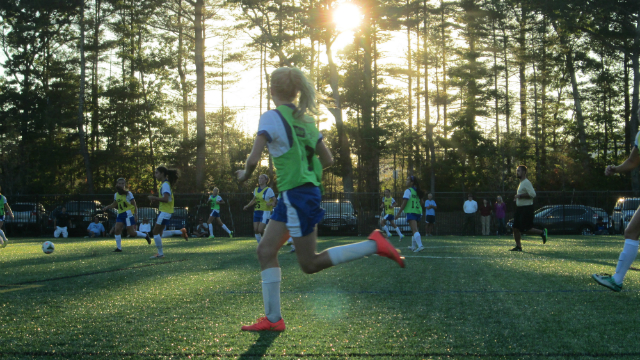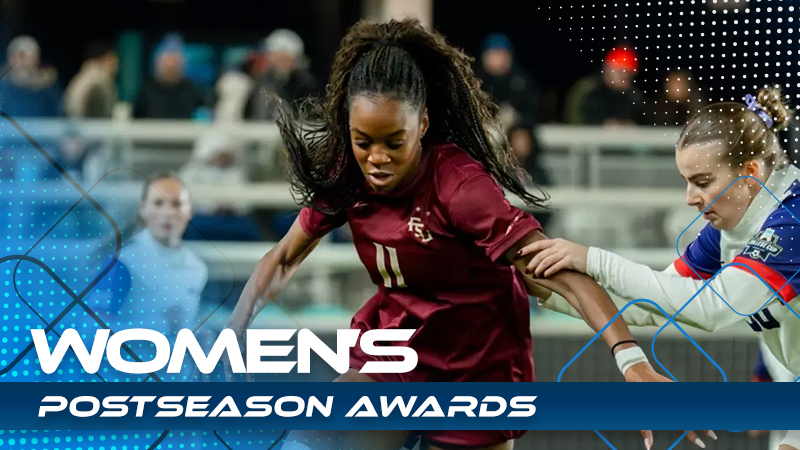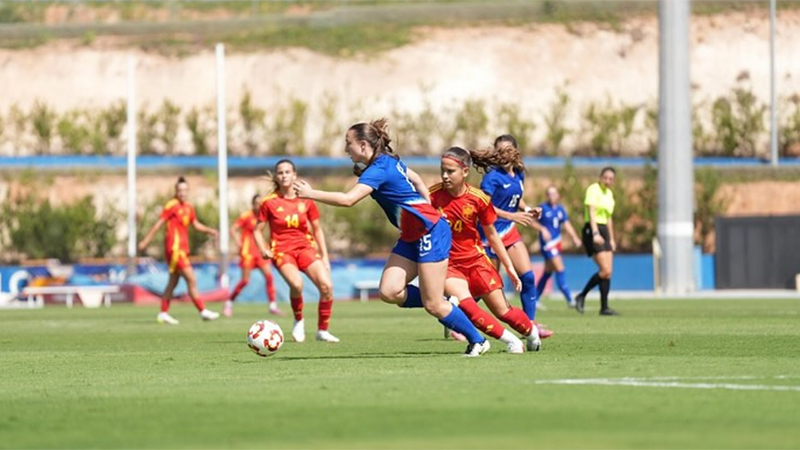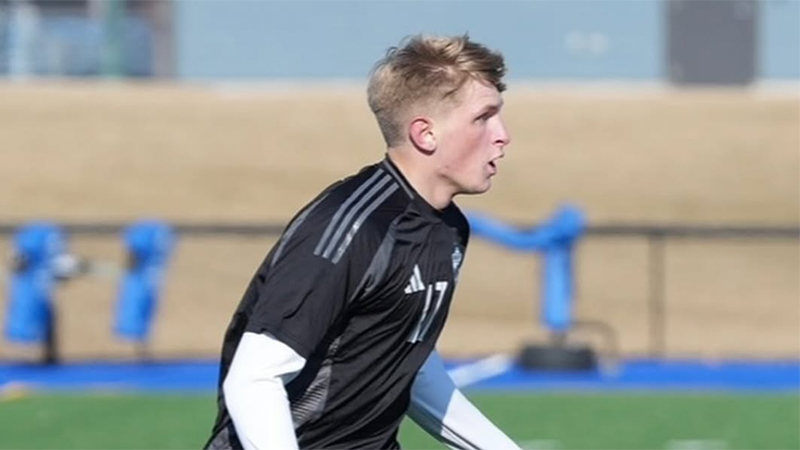U.S. Club id2 making strides in 10th year

To hear the coaches involved tell it, U.S. Club Soccer’s id2 program is on an exponential growth track. Started in 2004 as an avenue for 13 and 14-year old players to get reps in a competitive environment with other top players, it’s blossomed over the last 10 years into a vital baseline recruiting tool for U.S. Soccer. The federation’s presence at these events is now a given.
Just in the last four years, the event was among the first to nationally identify standouts like Corey Baird (Stanford), Collin Fernandez (Chicago Fire homegrown), Christian Pulisic (Borussia Dortmund) and more. It’s an easy conduit from the relative anonymity of localized U13 and U14 club soccer and into the embrace of the U.S. Youth National Team system.
That process continued apace last weekend. U.S. Club Soccer held its third id2 camp of the year in Taunton, Massachusetts, where it accepted the recommendations of 95 top boys and girls club players born in 2000 or 2001 from 50 programs. In addition to girls program director Rory Dames and his boys counterpart Gerry McKeown, a staff of eight coaches ran the camp and compiled scouting reports on each player. They weren’t alone. U.S. Soccer sent Scott Donnelly, its technical advisor for the northeast region, in addition to director of scouting Tony Lepore and U14 GNT coach April Kater, who became the first such coach in the federation’s history last year.
The event’s appeal draws from the visibility it allows players who aren’t necessarily on the national team radar. With the advent of its U14 system, both at the Development Academy and national team levels, U.S. Soccer is turning the wheel at this level faster than it ever has. In one sense, that creates a hole once occupied by the very best already identified players in the nation.
“U.S. Soccer, since they have camps at this age, some of the players we want to bring into the camp, they don’t want us to, because they know they’re already going into a national camp,” said Dames, who’s been in this position since 2008. “I think when that starts to happen, you lose those kids. You lose the Morgan Andrews or Joanna Boyles or the Lindsey Horan or Zoe Redei. U.S. Soccer has already identified them and don’t want to do too much programming with them, don’t want to put too much of a load on them.”
At the same time, it also opens up an avenue for scouting players who haven’t yet made their mark. One of the primary developmental roadblocks in America involves the nation’s sheer size and the inability of any one scouting network to cover the massive gaps that exist in identification. That’s never been more apart of the id2 ethos than it is now.
A sure sign of that growth is involvement. In the early days of id2’s existence, coaches had to claw for player nominations, which effected the overall quality. For the Taunton camp, the coaches received more than 500 player recommendations, more than five times the amount of players they could take. The eye of the needle is gradually shrinking.
“Since 2007 to now, the overall quality (at id2 camps) has been higher,” said McKeown, who started at this post in 2007. “But I’m not going to say that’s a reflection of necessarily a change in what’s happening in the country. It’s probably more a function of the program’s success and is getting more mainstream in terms of young players knowing about it. So we’re tending to get better nominations and we’re scouting better. So we’re seeing better players, and that helps the overall quality. They’ve been comprehensively better, but we did have some special guys in those early years.”
The events themselves start loose and gradually gain structure as the players develop a comfort level with those around them. They’ll start with an informal kick-about on Thursday night to eliminate some of the jitters involved with being a 13-year-old preparing to showcase in front of U.S. Soccer staffers.
“Everyone’s always nervous that first night,” Dames said.
On Friday, the players are organized into groups for a full-sided scrimmage in the morning before more training in those same groups in the evening. Finally, the teams train together on Saturday morning before a final round of games that night. The point is to ease players in, taking them from their technical comfort level to an environment where talent evaluators can assess their abilities in game settings.
On both sides, this allows coaches to take in how players react to certain situations. And the third of the four camps was one of the best they’ve seen yet.
“Five and six years ago, there were some very clear deficiencies that the players coming into the camps had,” Dames said. “It wasn’t a regional problem, it was a national problem. It didn’t really matter if we were having a camp in the West or the East or the South. The technical efficiency of the players now and the tactical sophistication has really gone up over the years. I think this past camp, that was on display. It was probably one of the highest levels we’ve had.”
Headlines
- Recruiting Roundup: December 15-21
- How Do I Get Scouted by TopDrawerSoccer?
- 2026 Women's Division I Transfer Tracker
- 2025 Women's DI Postseason Awards
- Washington Wins First National Title
- Men's College Cup Final Preview
- IMG Academy Player Rankings: Boys 2027
-
Commitments: Looking at Loyola Marymount

- NC State Advances to First College Cup Final
- Washington Dominates College Cup Semifinal



